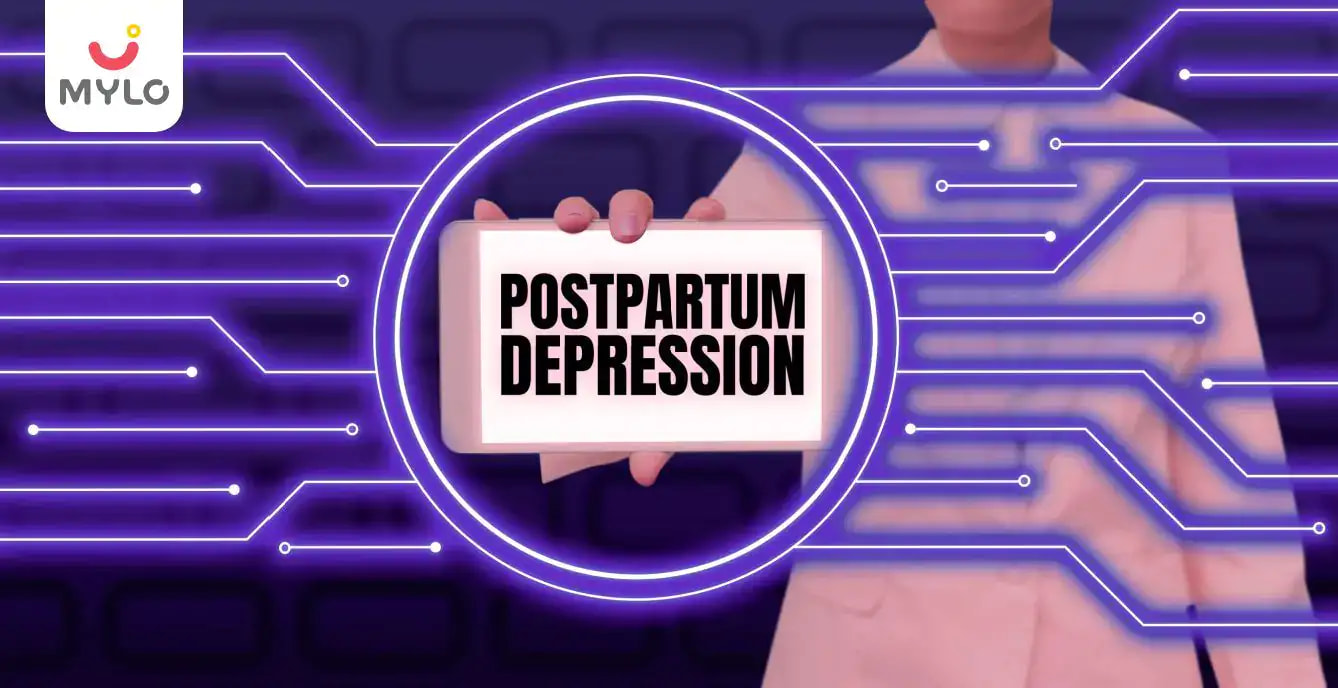Home

Women Specific Issues

Perimenopause: Causes, Symptoms, Risks & Treatment
In this Article

Women Specific Issues
Perimenopause: Causes, Symptoms, Risks & Treatment
Updated on 3 November 2023
Many women are not aware of the signs of the transition from perimenopause to menopause, which can lead to disruption in their lives as they try to cope with new symptoms. In this blog post, we will explore perimenopause - what causes it, common symptoms and risks associated with it and possible treatment options. So, let’s dive right in!
What is Perimenopause?
Perimenopause is a phase in a woman’s life when her body starts to transition into menopause. It usually occurs in her 40s or 50s, but can happen as early as her 30s or as late as her 60s. During perimenopause, a woman’s ovaries produce less estrogen and progesterone, which are hormones that regulate the menstrual cycle.
Difference between Perimenopause and Menopause
There are a few key differences between perimenopause and menopause:
- Perimenopause is considered the transition period into menopause, meaning that it is the time when a woman's body starts to experience changes that will eventually lead to menopause.
- Menopause, on the other hand, is defined as the point in a woman's life when she has gone 12 consecutive months without having a period.
- During perimenopause, many women begin to experience changes in their menstrual cycles.
- Once a woman reaches menopause and her ovaries have stopped producing eggs, she will no longer have periods.
What are the causes of Perimenopause?
- Age: The older you are, the more likely you are to experience perimenopause.
- Family history: If your mother or sisters went through menopause at an early age, you may be more likely to as well.
- Smoking: Women who smoke tend to reach menopause about one to two years earlier than nonsmokers.
- Health conditions: Certain medical conditions, such as premature ovarian failure or having your ovaries removed, can cause menopause to occur earlier than usual.
When does Menopause start?
There is no definitive answer to the question of when menopause starts. It varies from woman to woman and is affected by a variety of factors, including her family history, lifestyle choices, and overall health. The average age for menopause is 51, but it can start as early as age 40 or as late as age 55.
What is the duration of perimenopause?
The average length of perimenopause is four years, but some women may experience it for up to 10 years. The first signs of perimenopause usually appear in your late 40s. However, perimenopause can start as early as your mid-30s or as late as your early 50s.
What hormonal changes occur during perimenopause?
Some of the hormonal changes that a woman may experience during perimenopause include:
- Decreased levels of estrogen
- Decreased levels of progesterone
- Increased levels of follicle-stimulating hormone (FSH)
- Increased levels of luteinizing hormone (LH)
Signs of perimenopause
Common signs of perimenopause include:
- Hot flashes
- Night sweats
- Mood swings
- Anxiety or depression
- Memory problems or "brain fog"
What are the symptoms of Perimenopause?
Common perimenopause symptoms include:
- Sleep problems
- Weight gain
- Low sex drive
- Thinning hair and dry skin
What are the risks associated with Perimenopause?
Perimenopause is associated with an increased risk of osteoporosis, heart disease, stroke, and breast cancer. It is important to remember that many of these risks can be mitigated with lifestyle changes and/or medical intervention.
How do periods feel during perimenopause?
Through the menopausal transition, ovulation becomes more unpredictable and the time between menstrual cycles can be longer or shorter. It’s also possible that the flow of periods may sometimes be light or heavy and you may even skip some periods.
How can I tell if changes in my menstrual cycle are simply perimenopausal?
Changes in the menstrual cycle are often the first sign of perimenopause. But they can also be symptoms of some other underlying condition. If changes in the menstrual cycle are accompanied by other perimenopausal signs like hot flashes, sleep troubles, vaginal dryness, decrease in sex drive and mood changes.
Is Perimenopause associated with ovulation?
Yes, perimenopause is associated with ovulation. However, the ovaries gradually produce less estrogen during this time, which can cause irregular periods.
Diagnosis & tests perimenopause
Perimenopause is a gradual transition and no single test is enough to diagnose whether you have entered perimenopause. A doctor will take many things into consideration such as your age, menstrual history and the symptoms and body changes you are experiencing. The doctor may also conduct some tests to check your hormonal levels and thyroid function to determine if you have entered perimenopause.
Which FSH level denotes Perimenopause?
The level of FSH that is considered to be normal varies from woman to woman, but a level greater than 30 IU/L is generally considered to be indicative of perimenopause.
Treatment and Management of perimenopause
Following are some lifestyle changes that can help:
- Eating a healthy diet
- Reducing stress levels
- Avoiding trigger foods (e.g., spicy food, caffeine)
Home remedies for Perimenopause
These are some of the home remedies believed to ease the symptoms:
- Herbal teas containing chamomile or lavender.
- Exercise and relaxation techniques like yoga or meditation.
- Eating a healthy diet full of fruits, vegetables, and whole grains.
What can I do to lower my risk of perimenopause complications?
You can reduce your risk of perimenopause complications by seeking treatment as and when needed. You should talk to your doctor if you notice the following signs:
- Bleeding for more than seven days continuously
- Bleeding between periods
- Changing pads or tampons every 1-2 hours
- Having periods more frequently than 21 days
Can women in Perimenopause become pregnant?
It is possible for women in perimenopause to become pregnant, although the chances are lower than for women who are not in perimenopause. The fertility of women declines as they age, and this decline accelerates during perimenopause.
When should one call the physician?
There are a few key things to look out for that may indicate you are in perimenopause, such as:
- Irregular periods
- Hot flashes
- Sleep problems
- Weight gain or loss
- Thinning hair
Does Perimenopause have an impact on sleep?
During perimenopause, hormonal fluctuations can cause hot flashes and night sweats, both of which can interfere with sleep. In addition, anxiety and stress levels often increase during this time, which can also lead to difficulty sleeping.
You may like : Amenorrhea: Meaning, Sypmtoms & Causes
Conclusion
Perimenopause is a natural and inevitable stage of life for many women. Understanding the causes, symptoms and risks associated with it is essential to properly manage your health during this time. With the right knowledge and treatment, you can prepare yourself for perimenopause and live a healthy, fulfilling life regardless of age or sex hormones. Visit Mylo Family for blogs on menopause, postpartum and more such diseases.



Written by
Sanju Rathi
A Postgraduate in English Literature and a professional diploma holder in Interior Design and Display, Sanju started her career as English TGT. Always interested in writing, shetook to freelance writing to pursue her passion side by side. As a content specialist, She is actively producing and providing content in every possible niche.
Read MoreGet baby's diet chart, and growth tips

Related Articles
Related Questions
Hello frnds..still no pain...doctor said head fix nhi hua hai..bt vagina me pain hai aur back pain bhi... anyone having same issues??

Kon kon c chije aisi hai jo pregnancy mei gas acidity jalan karti hain... Koi btayega plz bcz mujhe aksar khane ke baad hi samagh aata hai ki is chij se gas acidity jalan ho gyi hai. Please share your knowledge

I am 13 week pregnancy. Anyone having Storione-xt tablet. It better to have morning or night ???

Hlo to be moms....i hv a query...in my 9.5 wk i feel body joint pain like in ankle, knee, wrist, shoulder, toes....pain intensity is high...i cnt sleep....what should i do pls help....cn i cosult my doc.

Influenza and boostrix injection kisiko laga hai kya 8 month pregnancy me and q lagta hai ye plz reply me

RECENTLY PUBLISHED ARTICLES
our most recent articles

Diet & Nutrition
গর্ভাবস্থায় আলুবোখরা: উপকারিতা ও ঝুঁকি | Prunes During Pregnancy: Benefits & Risks in Bengali

Diet & Nutrition
গর্ভাবস্থায় হিং | ঝুঁকি, সুবিধা এবং অন্যান্য চিকিৎসা | Hing During Pregnancy | Risks, Benefits & Other Treatments in Bengali

Women Specific Issues
স্তনের উপর সাদা দাগ: লক্ষণ, কারণ এবং চিকিৎসা | White Spots on Nipple: Causes, Symptoms, and Treatments in Bengali

Diet & Nutrition
গর্ভাবস্থায় পোহা: উপকারিতা, ধরণ এবং রেসিপি | Poha During Pregnancy: Benefits, Types & Recipes in Bengali

Diet & Nutrition
গর্ভাবস্থায় মাছ: উপকারিতা এবং ঝুঁকি | Fish In Pregnancy: Benefits and Risks in Bengali

Diet & Nutrition
গর্ভাবস্থায় রেড ওয়াইন: পার্শ্ব প্রতিক্রিয়া এবং নির্দেশিকা | Red Wine During Pregnancy: Side Effects & Guidelines in Bengali
- ইনার থাই চ্যাফিং: কারণ, উপসর্গ এবং চিকিৎসা | Inner Thigh Chafing: Causes, Symptoms & Treatment in Bengali
- গর্ভাবস্থায় ব্রাউন রাইস: উপকারিতা ও সতর্কতা | Brown Rice During Pregnancy: Benefits & Precautions in Bengali
- Velamentous Cord Insertion - Precautions, Results & Safety
- Unlock the Secret to Flawless Skin: 7 Must-Have Qualities in a Face Serum
- Unlock the Secret to Radiant Skin: How Vitamin C Serum Can Transform Your Complexion
- Gender No Bar: 10 Reasons Why Everyone Needs a Body Lotion
- Unlock the Secret to Radiant Skin How to Choose the Perfect Body Lotion for Your Skin Type
- Top 10 Reasons to Apply a Body Lotion After Every Bath
- Communication in Toddlers: Milestones & Activities
- How to Improve Vocabulary for Toddlers?
- A Comprehensive Guide to Understanding Placenta Accreta
- Vulvovaginitis in Toddlers Causes, Symptoms and Treatment
- A Comprehensive Guide to Understanding Cerebral Palsy in Children
- Bitter Taste in Mouth During Pregnancy: Understanding the Causes and Remedies


AWARDS AND RECOGNITION

Mylo wins Forbes D2C Disruptor award

Mylo wins The Economic Times Promising Brands 2022
AS SEEN IN
















- Mylo Care: Effective and science-backed personal care and wellness solutions for a joyful you.
- Mylo Baby: Science-backed, gentle and effective personal care & hygiene range for your little one.
- Mylo Community: Trusted and empathetic community of 10mn+ parents and experts.
Product Categories
baby carrier | baby soap | baby wipes | stretch marks cream | baby cream | baby shampoo | baby massage oil | baby hair oil | stretch marks oil | baby body wash | baby powder | baby lotion | diaper rash cream | newborn diapers | teether | baby kajal | baby diapers | cloth diapers |








